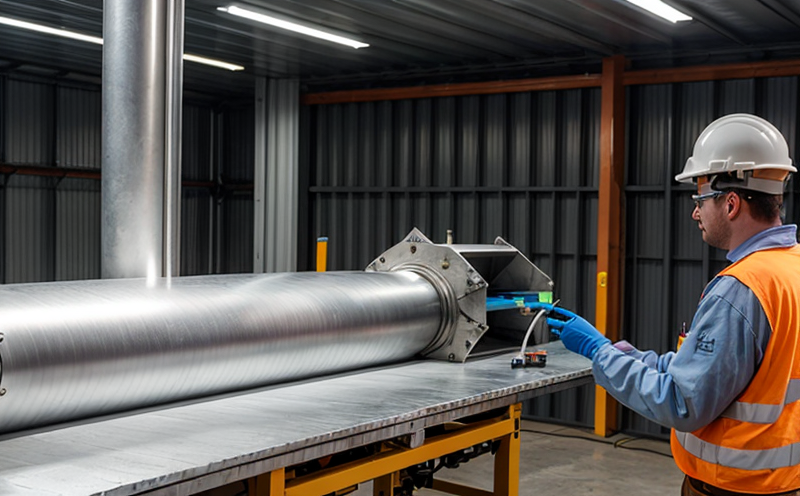EN ISO 6507 Vickers Hardness Testing of Renewable Metals
The EN ISO 6507 series specifies the methods for determining hardness by means of indentation tests using a diamond indenter. This standard is particularly relevant in the context of renewable energy testing, where the integrity and performance of materials are critical to ensuring the longevity and efficiency of components used in various applications.
In the realm of renewable energy, metals such as titanium, nickel alloys, stainless steel, and copper play crucial roles. Their mechanical properties directly influence the reliability and durability of these components. The Vickers hardness test provides a precise measure of these properties by applying a known load to the indenter and measuring the resulting indentation area on the surface of the material.
The EN ISO 6507-1 standard outlines the basic principles for performing Vickers hardness tests, while EN ISO 6507-2 specifies the methods for determining the hardness of metallic materials using a diamond indenter. This test is performed under controlled conditions to ensure accurate and reproducible results.
The test involves applying a specified load for a set duration, typically lasting between 10 seconds and several minutes depending on the material being tested. After the holding period, the load is removed, leaving an indentation that is then measured with a microscope using a Vickers hardness tester. The hardness value is calculated based on the diagonal length of this indentation.
This method provides valuable insights into the mechanical properties of renewable energy components, including their resistance to wear and tear under varying conditions. This information is essential for quality assurance in manufacturing processes and for ensuring compliance with international standards.
The Vickers hardness test is widely recognized for its versatility across different materials and applications within the renewable energy sector. For instance, it can be used to evaluate the performance of turbine blades made from nickel-based superalloys or to assess the durability of gears in wind turbines fabricated from steel alloys.
| Material | Vickers Hardness Range (HV) |
|---|---|
| Titanium Alloys | 100–350 HV |
| Nickel-Based Superalloys | 400–700 HV |
| Stainless Steel | 200–600 HV |
| Copper Alloys | 50–300 HV |
The test results provide engineers and quality managers with a comprehensive understanding of the mechanical properties of these materials, which is crucial for optimizing manufacturing processes and ensuring product performance. By adhering to the EN ISO 6507 standards, manufacturers can ensure that their products meet strict quality and reliability criteria.
Industry Applications
- Turbine Blades in Wind Energy Systems
- Gears and Bearings for Solar Photovoltaic Panels
- Metallic Components of Hydroelectric Turbines
- Structural Elements in Offshore Wind Farms
The EN ISO 6507 Vickers Hardness Testing is a critical component of the quality assurance processes in renewable energy manufacturing. It ensures that materials used in these sectors meet stringent performance requirements, thereby enhancing the overall efficiency and reliability of renewable energy systems.
Quality and Reliability Assurance
The Vickers hardness test plays a pivotal role in ensuring that materials used in renewable energy applications meet the highest standards of quality and reliability. By accurately measuring the hardness of components, this testing method helps to identify potential weaknesses or inconsistencies in manufacturing processes.
In the context of wind turbine blades, for example, the hardness of the material can affect its resistance to fatigue under extreme weather conditions. Similarly, in solar photovoltaic panels, the mechanical properties of gears and bearings are crucial for efficient power transmission without wear and tear over time.
Compliance with international standards such as EN ISO 6507 ensures that manufacturers adhere to best practices in material selection and testing. This not only enhances product performance but also contributes to a more sustainable and reliable energy infrastructure.
Competitive Advantage and Market Impact
- Precise measurement of mechanical properties for enhanced reliability
- Compliance with global standards, ensuring market access
- Improved product performance leading to lower maintenance costs
- Informed decision-making based on accurate test data
The use of the EN ISO 6507 Vickers Hardness Testing provides a competitive edge by offering precise and reliable testing results. This enhances marketability and ensures that products meet international quality standards, thereby opening up opportunities for global expansion.





